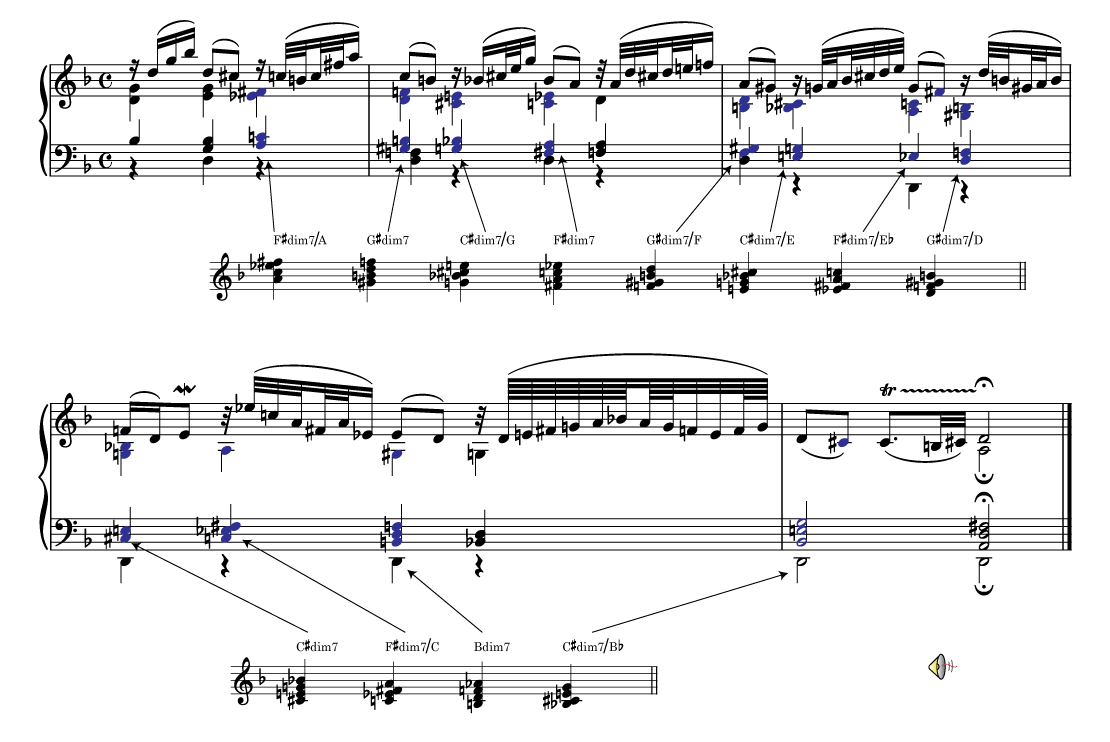Harmonic sequence using fourths and fifths
José Rodríguez Alvira
The most common sequence uses fourths, also called cycle-of-fourths or cycle-of-fifths. It follows the following pattern: ascending fourth, descending fifth.
An example using chords in root position:
The fourth interval is the basis of all the sequences we will discuss. In this case, the fourth interval transposes down by seconds:

C-F transposes as B-E, A-D, ...
Other fundamental aspects of harmonic sequences
- The intervals do not have to be of the same quality. For example, we find a diminished fifth on the bass between the second and third chords.
- Each voice follows a melodic pattern:
- Soprano and alto: descending third, ascending second, descending third, ascending second, ...
- Tenor: descending second, unison, descending second, unison, ...
- We find patterns between the different voices:
- The intervals between bass and soprano are: third, fifth, third, ...
- Between tenor and alto: fourth, third, fourth, ...
- Similar patterns occur between any of the voices.
Using seventh chords
Using inversions
The modulating sequence
Using dominant seventh chords
Using diminished seventh chords
Combined triads, dominants and diminished seventh chords
Tritone substitution

This work is licensed under a Creative Commons Attribution-NonCommercial-NoDerivatives 4.0 International License. José Rodríguez Alvira.
Published by teoria.com


















